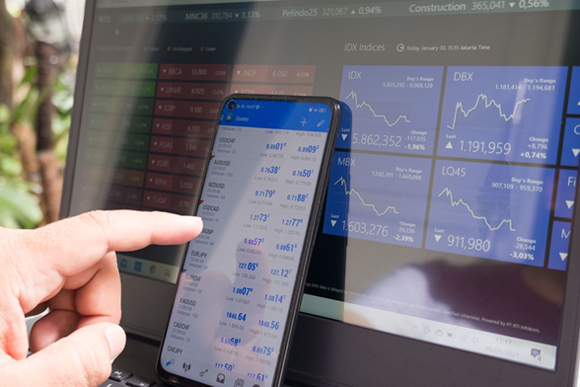
Investors who start out with a relatively small account balance tend to be discouraged by how difficult it seems to grow such a small amount into hundreds of thousands of dollars by investing in the stock market.
If you have felt this way, there are strategies you could implement to quickly grow your portfolio’s value. These strategies are considered high-risk/high-reward approaches to investing but the payout could be quite sizable if you play your cards right.
#1 – Pick a low-cost broker
The first step to build up your balance is to slash the trading commissions and other fees you pay when buying and selling securities as these costs can eat up your relatively small initial earnings.
To achieve this, you must identify a low-cost broker that you can safely operate with and that offers the kind of instruments you would like to invest in.
Websites like BrokerReviews.com will help you in screening the best brokers out there as they summarize the advantages, disadvantages, fees, and other important details of each of these providers to help you in short-listing your candidates.
#2 – Invest in growth stocks
Growth stocks are pieces of equity of companies that have displayed sizable revenue and earnings growth rates in the past and whose growth prospects are significantly promising amid a still untapped total addressable market or a dominant position in a niche segment.
These stocks tend to deliver above-average performances over time. Think of Netflix back in 2016 when it was trading at around $100 per share. The company was growing quite fast and an investor who identified the potential of the company back then would have seen his initial investment multiplied by 5 times by now.
The best growth stocks display the following characteristics:
- Elevated past revenue and earnings growth.
- Appealing growth prospects (new markets, promising product/service pipeline, dominant presence in an unserved niche segment).
- Low or manageable debt.
- High gross profit margins.
- A capable management team.
#3 – Concentrate your positions on your top picks

Diversification is considered a pillar of long-term investing but it could play against you if you have a relatively small account balance as it would, in most cases, keep a lid on your returns.
One of the world’s most successful investors, Warren Buffet, said once that “wide diversification is only required when investors do not understand what they are doing”.
So, if you have studied and analyzed the businesses you will be investing in thoroughly, a concentrated position in those companies will play in your favor as your portfolio will be dramatically boosted once the performance of those businesses starts to pick up some steam.
#4 – Use derivatives
Even though derivatives are very volatile in the short-term, long-dated options can be a great way to grow a small portfolio quickly than you would if you just buy shares of the companies you like outright.
These options are commonly referred to as Long-Term Equity Anticipation Securities (LEAPS). The difference between them is that the expiration date of these options is typically set 12 months or further from now.
If you have identified a stock that you believe will be trading at a considerably higher price 12 months or more from now, you could buy a LEAPS and hold it until the underlying instrument experiences that kind of price appreciation. With LEAPS, profits will usually be higher than those you would earn by buying the common stock of the company.
Take for example Micron Technology’s January 20, 2023 LEAPS. The call options expiring on this date with a strike price of $72.50 – the current price of Micron’s shares – are trading at a premium of $12.55 per contract, meaning that you would have to invest $1,255 for buying 100 shares of Micron at that price once the instrument expires.
If you believe that shares of MU will move above $85 per share (the break-even price) during the next 17 months (the total holding period), you would rather buy Micron’s LEAPS rather than investing in the stock outright as you’ll earn an extra $100 on your investment (an 8% return) for every extra dollar in the stock price above the $85 break even.
Bottom line
As you can see, it is not impossible to grow a small investment account if you are willing to take some extra risks. Even though these strategies might sound a bit complex at first glance, you may pick one of them to further learn about how they could be implemented in practice.